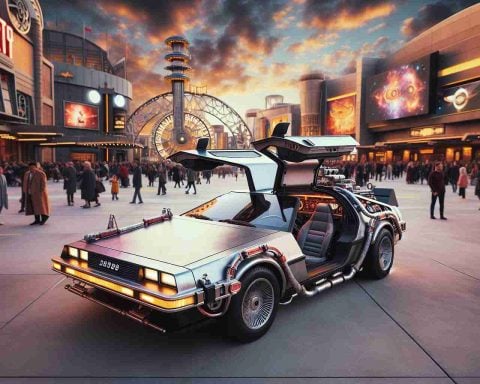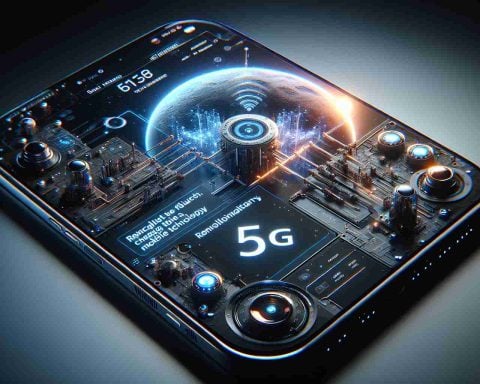In the ever-evolving landscape of electric vehicles (EVs), Toyota has recently made headlines with its announcement of a groundbreaking innovation: a solid-state battery that boasts an impressive range of 745 miles on a single charge. This development has significant implications for the automotive industry and the future of sustainable transportation.
What are Solid-State Batteries?
Solid-state batteries differ fundamentally from traditional lithium-ion batteries, which use liquid or gel electrolytes to facilitate the movement of lithium ions between the anode and cathode. In contrast, solid-state batteries utilize a solid electrolyte. This shift presents several advantages, including increased energy density, enhanced safety, and a longer lifespan. As manufacturers grapple with the limitations of current battery technologies, Toyota’s pioneering effort in solid-state battery design could revolutionize how we think about EV range and performance.
A Game-Changer for Driving Range
One of the most striking features of Toyota’s new solid-state battery is its remarkable range. With the capability to deliver 745 miles on a single charge, this innovation has the potential to alleviate one of the most significant concerns for EV consumers: range anxiety. Range anxiety refers to the fear of running out of battery power before being able to recharge. By extending the distance an electric vehicle can travel, Toyota is addressing this issue head-on, making electric cars a more viable option for long-distance travel.
Impact on Sustainability
Beyond improved range, solid-state batteries are also poised to enhance the sustainability of electric vehicles. These batteries can reduce reliance on rare and often environmentally harmful materials used in conventional batteries. Furthermore, solid-state technology can improve charging times, allowing for faster recharging and more efficient use of energy resources. This means that as more consumers adopt electric vehicles, the overall carbon footprint associated with their use could decrease.
Challenges and Future Outlook
While the promise of solid-state batteries is significant, there are still challenges to overcome before they can be mass-produced and widely implemented in the automotive market. The manufacturing process must become more efficient and cost-effective to compete with existing lithium-ion technology. Toyota is reportedly working on these obstacles, aiming for commercial production by the mid-2020s. As the largest car manufacturer in the world, Toyota’s advancements in battery technology will likely set the stage for a new era in electric mobility.
Conclusion
Toyota’s introduction of a solid-state battery with a 745-mile range represents a major leap forward in electric vehicle technology. By alleviating range anxiety, enhancing sustainability, and offering longer lifespans, this innovation could change the way consumers and manufacturers view electric vehicles. As we move towards a more sustainable automotive future, breakthroughs like this one from Toyota could play a crucial role in expanding the acceptance and usability of electric vehicles on a global scale. The automotive world is watching closely as Toyota continues to develop this transformative technology.
Essential Tips and Life Hacks for Electric Vehicle Enthusiasts
As the world shifts towards electric mobility, with notable advancements like Toyota’s solid-state battery, it’s essential for current and future electric vehicle (EV) owners to familiarize themselves with tips and life hacks that can enhance their experience. Here are some valuable insights to consider.
1. Understand Your Charging Options
Charging is a crucial aspect of owning an electric vehicle. Familiarize yourself with the different types of charging stations available:
– Level 1 Charging: This is the slowest option, typically using a standard household outlet. Ideal for overnight charging at home.
– Level 2 Charging: These chargers are faster and can be found at public charging stations, making them suitable for quick top-ups.
– DC Fast Charging: Best for long-distance travel, these stations can provide up to 80% charge in about 30 minutes.
Knowing where to find these stations using apps or in-car navigation can alleviate range anxiety and make long road trips more manageable.
2. Optimize Your Driving Habits
The way you drive can significantly impact your EV’s range. Here are a few habits to adopt:
– Smooth Acceleration and Braking: Rapid starts and hard stops can drain your battery quickly. Instead, make use of regenerative braking to recover energy.
– Use Eco Mode: Most EVs come with an eco-driving mode that optimizes energy consumption.
– Limit Use of Air Conditioning: While driving with climate control on, try to limit its use, especially at lower outside temperatures.
3. Plan Your Trips Strategically
When planning long trips, consider these tips:
– Map Out Charging Stops: Use tools like Google Maps or dedicated EV apps to locate fast chargers along your route.
– Consider Weather Conditions: Be aware that extreme cold or heat can affect battery performance and range. Factor this into your travel plan.
– Pack Light: The heavier your vehicle, the more energy it consumes. Only pack what you need for your trip.
4. Stay Informed About Incentives
Many governments offer incentives for electric vehicle owners, including tax credits, rebates, and rebates for installing home charging stations. Being aware of these can save you money. Visit government websites or forums that specialize in EVs to stay updated on available programs.
5. Utilize Home Charging Solutions
If you own an EV, installing a Level 2 home charging station can make a significant difference in convenience. These stations provide faster charging capabilities than traditional outlets, ensuring your vehicle is ready to go whenever you need it. Additionally, consider setting up a charging schedule to make use of off-peak electricity rates.
Interesting Facts About Electric Vehicles
– The first electric vehicle was built in the 1830s, long before gasoline-powered cars.
– EVs can be significantly cheaper to operate than gas vehicles, often costing less than half per mile to charge compared to refueling with gasoline.
– Some electric vehicles can produce zero tailpipe emissions, contributing to cleaner air and lower carbon footprints.
As the automotive landscape continues to evolve, staying informed and making the most of your EV can lead to a more satisfying and sustainable driving experience. For more insights into electric vehicles, visit Toyota.
















